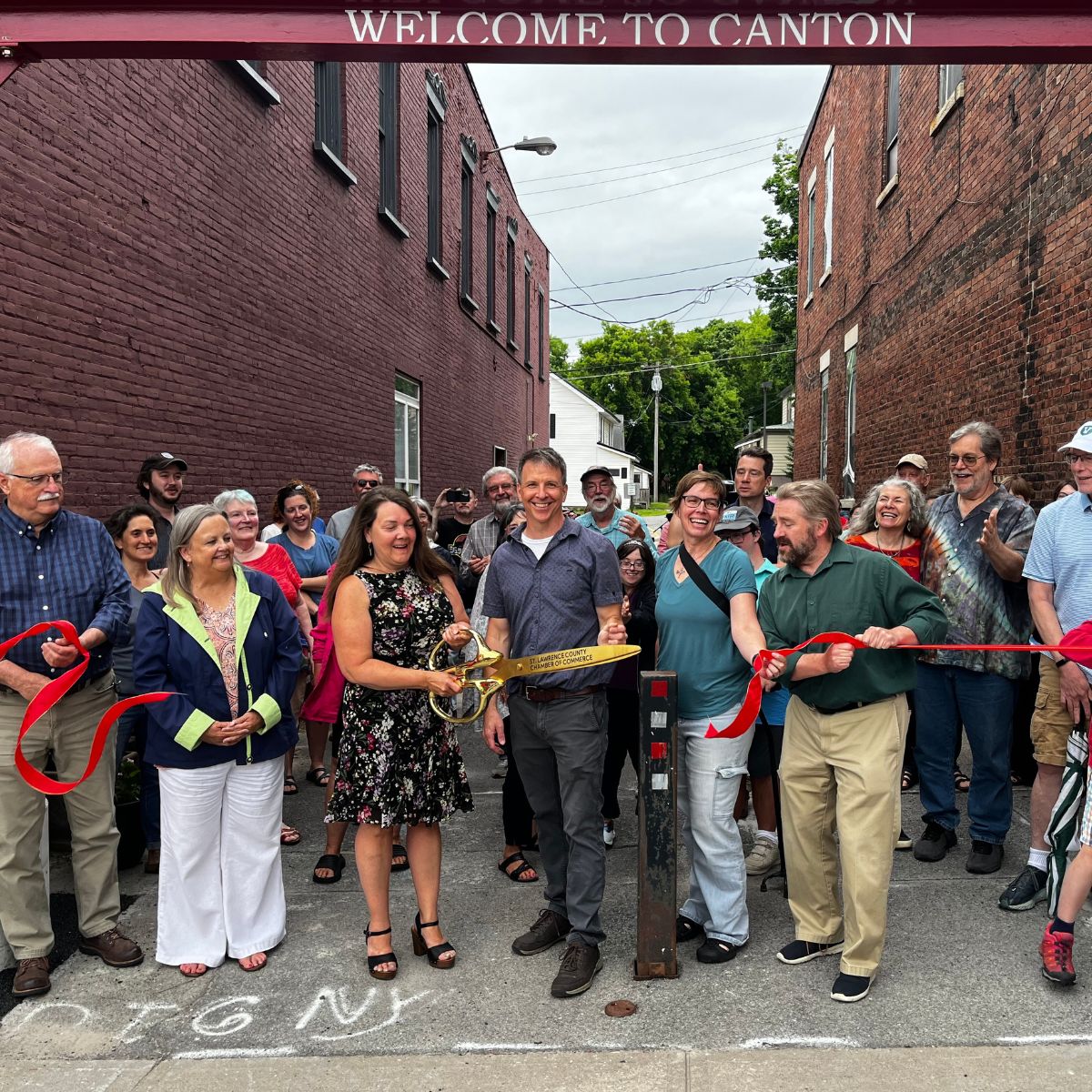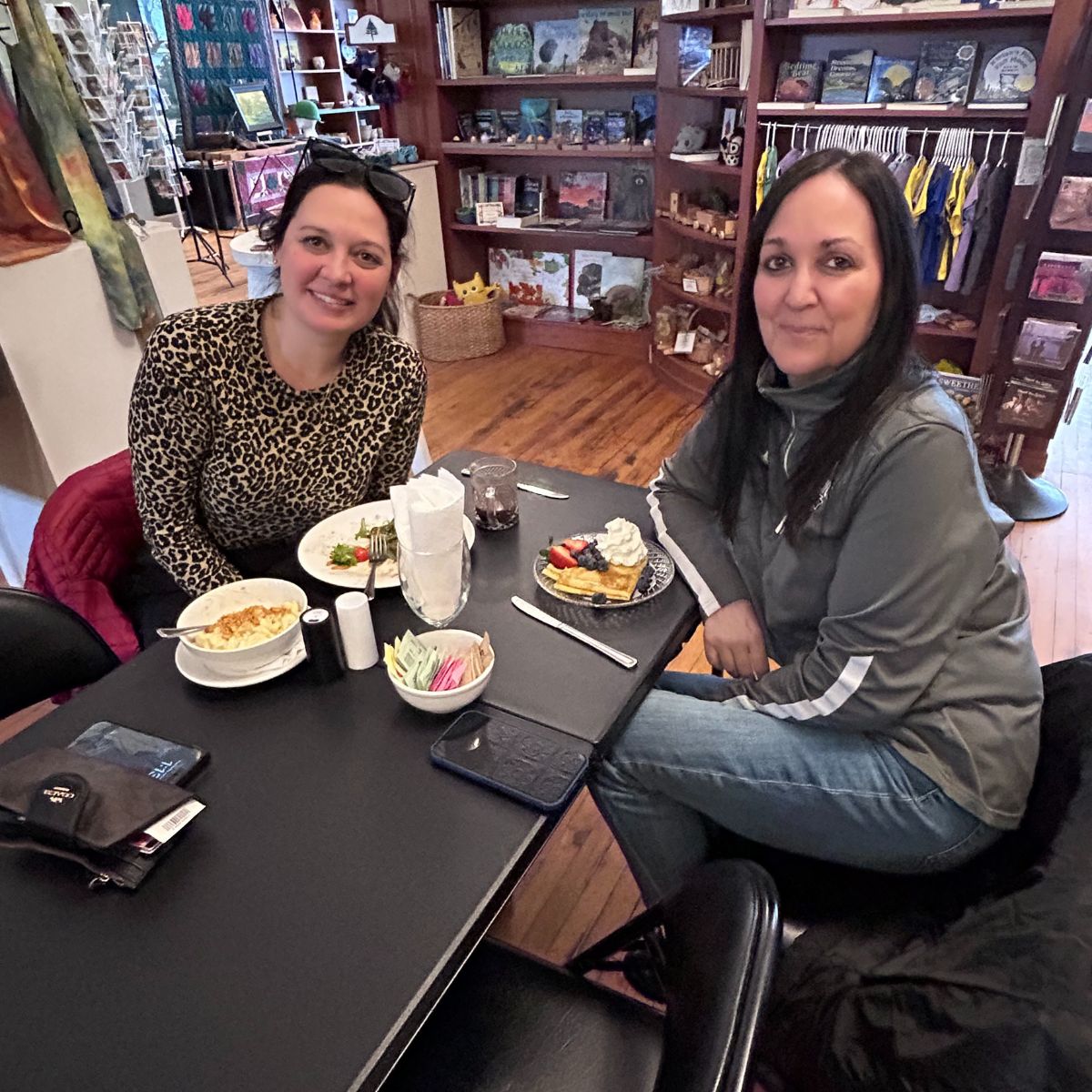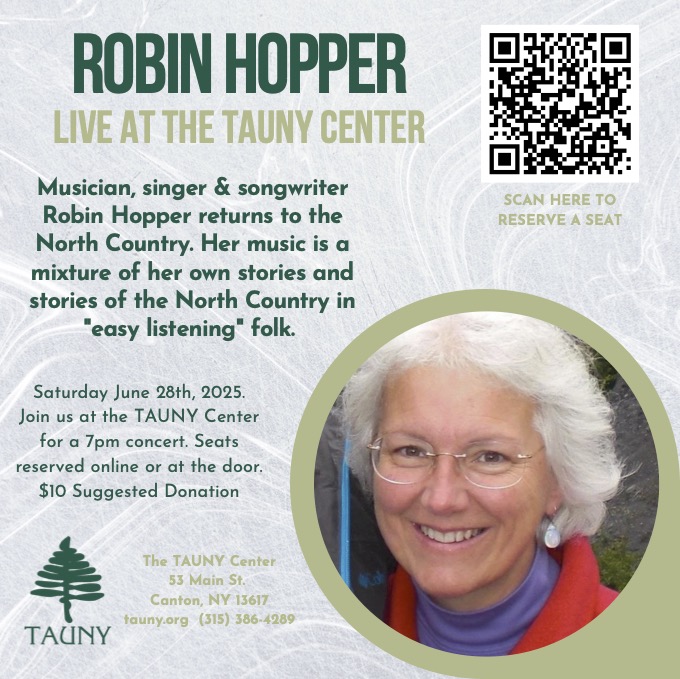Upcoming Events at TAUNY

Exhibit: "Legacies – Handing Down Traditional Fiber Arts"
Opening Reception Saturday, August 2nd 1-3 p.m.
The “Legacies” exhibit will focus on how the practices of traditional fiber arts are passed down within families and amongst local artistans. Featuring over 20 artists, and drawing on three fiber arts groups that meet regularly at TAUNY, the exhibit aligns with the organization’s mission to honor living traditions.
Exhibit runs through September 25th, 2025

Archway in Prentice Lane - Ribbon Cutting Ceremony
Friday, June 27th
5 p.m.
TAUNY & the Village of Canton celebrated the official opening of The Archway in Prentice Lane created by local artist and metalworker James Gonzalez. The space, featuring decorative benches, plants, bistro tables, and the racoon bike rack by Mr. Gonzalez, is open for the public to enjoy and come together in this new community place.

The Newberry Cafe - Summer Menu
Open Monday, Wednesday & Friday
10:30 a.m. - 1:30 p.m.
Join us at the Newberry Cafe for an updated summer menu. Just in time for the heat, we have a delicious ice cold homemade Newberry lemonade. We also feature meat and vegetarian panini’s and quiches, crepes, Newberry salad, crepes, and special desserts each week!

The Dinner Party: Judy Chicago Reimagined
Opening Reception - May 7th, 5 p.m.
Through May 28th
The St. Lawrence County Arts Council’s exhibit is coming to The TAUNY Center for a limited time! An installation with 16 collaborating local women identifying artists honoring 9 various women who have made an impact on our community with their work.

Folk Songwriting Workshop
Saturday, June 28, 2025
11:00 AM – 2:00 PM
Folk songwriter and musician Robin Dow Hopper will lead a 3 hour workshop featuring songwriting prompts and activities with the students.

Robin Hopper Concert
Saturday, June 28th, 2025
7 p.m.
Musician, singer and songwriter Robin Hopper returns to the North Country to perform live at The TAUNY Center. Her music tells stories of her own and from the North Country in an “easy listening style.” Tickets are a $10 suggested donation but registration is encouraged.
THE TAUNY CENTER
Listed on the National Register of Historic Places and part of Canton’s downtown Historic District, The TAUNY Center is an anchor space for local residents, tourists, artists, and artisans. As a central arts and cultural organization, TAUNY attracts thousands of local and regional audiences to experience live music, workshops, exhibits, and to purchase local artwork. The facility is a hub of activity which contributes to the foot traffic in the historic downtown district and generates economic activity, adding to the vibrancy of the region.
CURRENT CAPITAL PROJECT
TAUNY is undertaking the final phase of its capital campaign at its Center to address several deficiencies at the facility. This project includes the addition of an automatic door opener, replacement of all windows, updating the TAUNY sign, awning, doors, and full front facade to be more historically accurate, functional, and which will enhance the streetscape.
FOLKSTORE: NEW & NOTEWORTHY
Folkstore Friday features a new artisan each week whose work is displayed and sold in The TAUNY Center. This week we are featuring the works of Jennifer Sampson, whose plein air oil paintings are now available at The TAUNY Center Folkstore.
#folkstorefriday
ARTS EDUCATION
TAUNY’s Arts Education programs offer a series of educational workshops, residencies, and accompanying performances in traditional art forms for all ages at The TAUNY Center, schools, and other community based organizations in the North Country.
PLACEMAKING - ARCHWAY PROJECT
A new public art project entitled the Archway at Prentice Lane is being planned in partnership with the Village of Canton, which features the installation of a freestanding decorative archway on Main Street. The piece will be made by professional artist James Gonzalez, a metalworker who creates large-scale works which feature distinctive attributes of the areas he serves.
RESEARCH - FOLK STUDIES/ARCHIVES
TAUNY’s presentations of the customs and traditions of the North Country begin with research. Our staff and a network of scholars with whom we work travel around the region to study and document ongoing cultural practices in our communities. Read about our current research projects here.
NEWS & CONNECT - NEWBERRY CAFE - NOW OPEN*
The Newberry cafe is now open Monday, Wednesday, Friday from 10:30 a.m. – 1:30 p.m. and featuring paninis (meat & vegetarian), crepes, quiches (meat & vegetarian), soups, salads and a variety of beverages! Find out about our grant opening and more by clicking the tab below.
FEATURED PRACTICING ARTIST & EDUCATOR: KATE SCHULER
Katherine Schuler is an art educator, woodworker and owner of Schuler Woodworks in Potsdam, NY. In her thirteen years of teaching, Katie has had a variety of experiences and the opportunity to teach students at every grade level. She finds immense joy in the ingenuity of students at every age level and works to facilitate a safe space for them to continue their creative work. As a woodworker, she has been creating pieces for the last decade. Her hope is to share her love for woodworking with others through custom furniture, artworks, jewelry and functional household items.
Support TAUNY
Your support creates direct positive change within the TAUNY community. Every donation, regardless of size, is essential for bringing our programs to life, from educational workshops to performances that highlight New York’s North Country folk culture. By contributing, you help foster an inclusive space that celebrates traditions, supports artists, and strengthens community bonds. Together, we can ensure our cultural identity and practices thrive for future generations.






